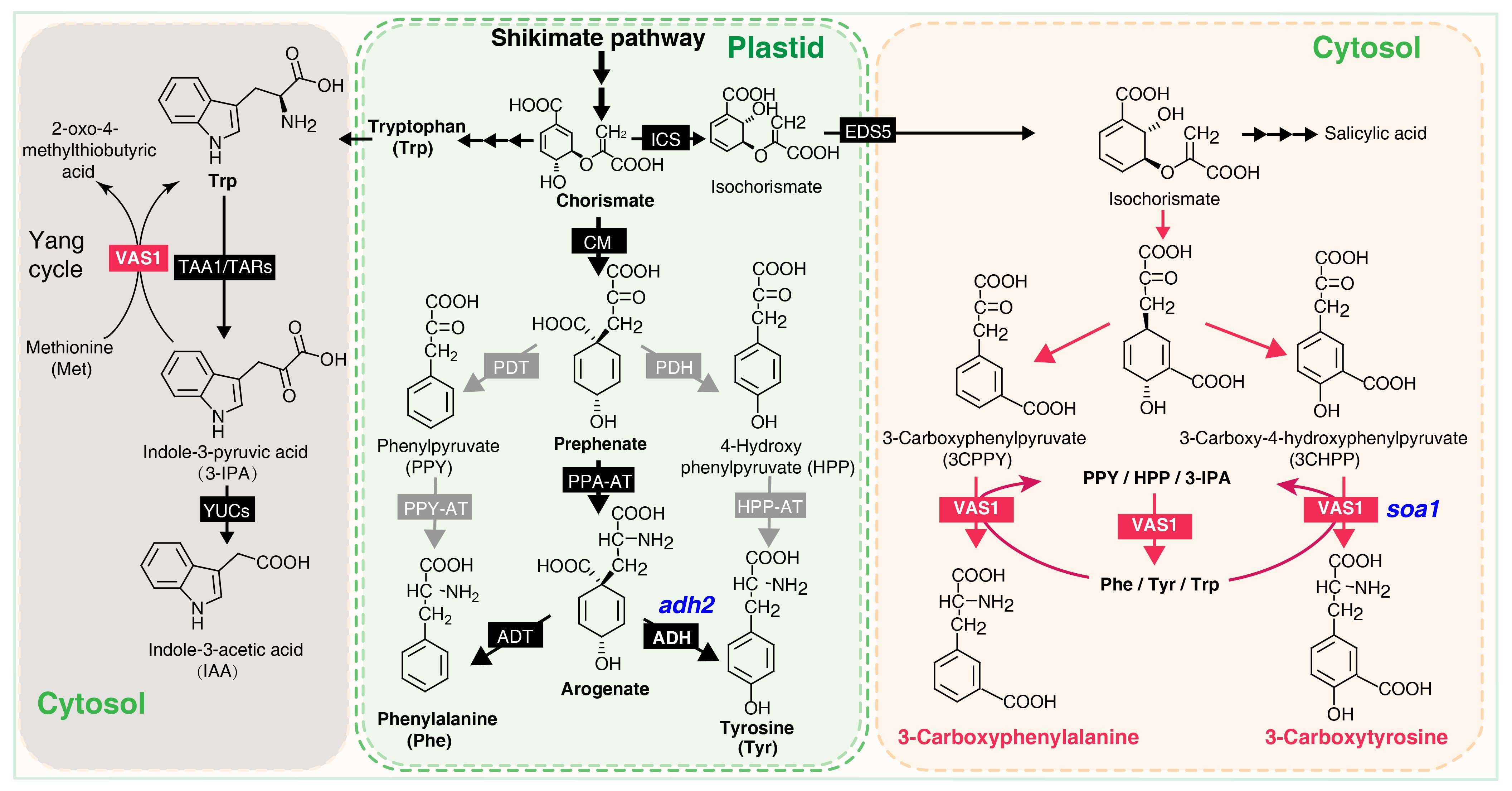The Cytosolic Aminotransferase VAS1 Coordinates Aromatic Amino Acid Biosynthesis and Metabolism
Date:09-01-2024 | 【Print】 【close】
Aromatic amino acids (AAAs) play a crucial role not only in the synthesis of proteins across all living cells but also in the generation of various primary and specialized metabolites. In the realm of plants, AAA biosynthesis stands out as a paramount biochemical pathway on Earth. Plants utilize AAAs to create specialized metabolites, ranging from electron carriers in photosynthesis to natural products with diverse biological activities. Many of these products find wide applications in pharmaceuticals, nutraceuticals, and industrial materials in our society. Nonetheless, the mechanisms governing the equilibrium between AAA biosynthesis and metabolism in plants remain elusive.
A research team, led by Prof. ZHAO Qiao from the Shenzhen Institute of Advanced Technology (SIAT) of the Chinese Academy of Sciences, has recently unveiled the role of a cytosolic aromatic aminotransferase, VAS1, in the recycling of AAAs. This process maintains AAA homeostasis, enabling plants to effectively coordinate the intricate metabolic and biosynthetic pathways of AAAs.
Published in Science Advances on Jan. 10, this study identifies VAS1 as a suppressor of arogenate dehydrogenase 2 (adh2) in Arabidopsis. VAS1, previously known for catalyzing the conversion of indole-3-pyruvic acid (3-IPA) to Trp, thereby coordinating the production of the plant hormones auxin and ethylene, is now recognized for its function in using AAAs as amino donors to produce 3-carboxyphenylalanine and 3-carboxytyrosine.
To trace the biosynthetic route of these compounds in planta, researchers conducted isotopic tracing experiments with 13C6-labeled Phe and 13C6-labeled Tyr. The results suggest that 3-carboxy AAAs are derived from pathways other than the direct modification of Phe or Tyr. Genetic evidence indicates that the biosynthesis of 3-carboxy AAAs occurs through the isochorismate pathway in the cytosol of plants. These pathways, distinct from general aromatic biosynthesis routes, are specific to certain plant species. Additionally, VAS1 is revealed to be responsible for cytosolic AAA biosynthesis, with its enzymatic activity susceptible to inhibition by 3-carboxyphenylalanine.
Prof. ZHAO emphasized the significance of the discovery of 3-carboxy AAAs, presenting opportunities for metabolic engineering of natural products. This involves utilizing 3-carboxy AAAs as precursors, not through direct structural modification of AAAs, but by leveraging VAS1's role in utilizing AAAs as amino donors. The fine-tuning of AAA formation by VAS1 unveils potential targets for metabolic engineering, offering insights that will inform rational design strategies for synthesizing AAAs and their metabolites in plants.

Fig. Biosynthesis pathways to AAAs and 3-carboxy AAAs in plants. (Image by SIAT)
Media Contact:
ZHANG Xiaomin
Email:xm.zhang@siat.ac.cn